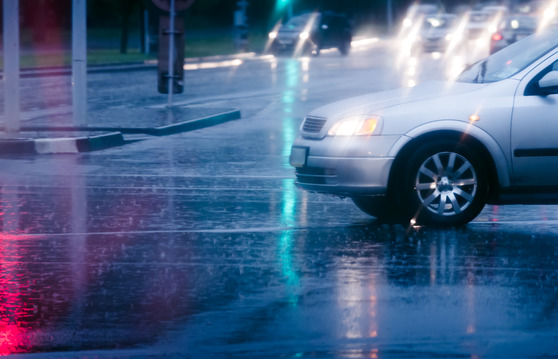Wet weather and cars simply do not mix. Rainy conditions make it difficult to maintain control of a vehicle and inhibit drivers’ vision, which is why crashes are more likely in inclement weather than in ideal conditions.
In fact, according to AAA, wet roads contribute to more than 1.2 million accidents in the United States each year. The Federal Highway Administration states that most weather-related crashes happen on wet pavement and during rainfall: 70% on wet pavement and 46% during rainfall.
Fortunately, there are several ways that drivers can reduce their risk of getting into an accident when Mother Nature strikes. Some collisions, however, are unavoidable.
If you have suffered an injury in an accident with a negligent driver, then you may be entitled to compensation for health-care bills, lost income, and other damages. A Scottsdale personal-injury lawyer from the Rudolph and Hammond Law Firm can evaluate your case to determine if you may have valid grounds for a lawsuit. Call us today at 480-951-9700 to schedule a consultation.
In the meantime, read on to learn three tips for driving in wet weather:
- Turn off Cruise Control
AAA recommends that drivers turn off cruise control in wet weather. With cruise control on, people are more likely to delay their braking and therefore may not leave enough room to stop on a slick road. It is better to take control of your vehicle and reduce speed by slowly pressing on the brake pedal.
Cruise control can also make you feel safer than you actually are, which can lead to complacency. In wet weather, it is important to be fully alert and aware. With cruise control deactivated, you will be more prepared to react quickly to hazards.
- Be Prepared for a Skid
According to DriversEducationUSA.com, the best way to respond to a skid in wet weather is not to panic or slam on the brakes, which causes you to lose even more control. Rather, look and steer in the direction that you want the car to go while applying light pressure to help control speed.
If in a front wheel skid, you need to gain traction, and this can be done by taking your foot off the gas and gradually pressing the brakes. If in a rear wheel skid, you need to slowly and safely accelerate while steering in the direction of the skid. This will help to stabilize the car and transfer the weight so you can gain traction.
- Drive Responsibly
The best way to avoid an accident when it is raining is to slow down and drive responsibly. This will help you maintain control of your vehicle. At a speed of just 35 mph, your car tires may lose contact with the road due to hydroplaning.
It is also important to avoid turning sharply, as well as braking unnecessarily. Increase your following distance between you and the driver in front and anticipate the actions of other motorists. It is particularly important to allow extra stopping distance at intersections and driving at a moderate speed can give you an advantage in this regard.
Wet weather can be particularly dangerous if a driver is behaving negligently. If you were in an accident with a reckless motorist, then the Rudolph & Hammond Law Firm may be able to help. A Scottsdale personal injury attorney can examine your crash and determine if you may have valid grounds for a claim. Call us today at 480-951-9700 to schedule a consultation.
